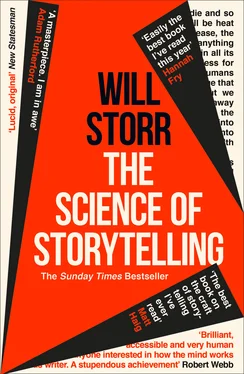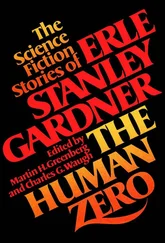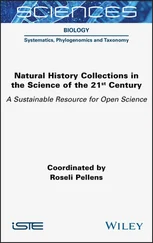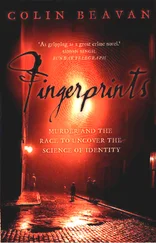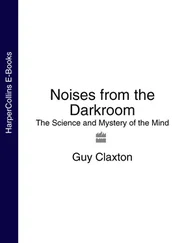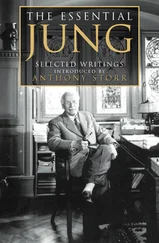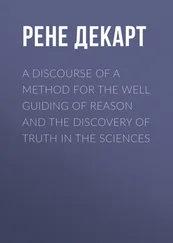We sense minds everywhere too. Just as the brain models the outside world it also builds models of minds. This skill, which is an essential weapon in our social armoury, is known as ‘theory of mind’. It enables us to imagine what others are thinking, feeling and plotting, even when they’re not present. We can experience the world from another’s perspective. For the psychologist Professor Nicholas Epley this capacity, which is obviously essential for storytelling, gave us incredible power. ‘Our species has conquered the Earth because of our ability to understand the minds of others,’ he writes, ‘not because of our opposable thumbs or handiness with tools.’ We develop this skill at around the age of four. It’s then that we become story-ready; equipped to understand the logic of narrative.
Human religion begins with the ability to populate our minds with imagined other minds. Shamans in hunter-gatherer tribes would enter trance states and interact with spirits, and use these interactions as attempts to control the world. Early religions were also typically animistic: our storytelling brains would project human-like minds into trees, rocks, mountains and animals, imagining they were possessed by gods who were responsible for changeful events, and required controlling with ritual and sacrifice.
Childhood stories reflect our natural tendency for such hyperactive mind-detecting. In fairytales, human-like minds are everywhere: mirrors talk, pigs eat breakfast, frogs turn into princes. Youngsters naturally treat their dolls and teddies as if they’re inhabited by selves. I remember feeling terrible guilt for preferring my pink bear, handmade by my Grandmother, to my shop-bought brown bear. I knew they both knew how I felt, and that left me distracted and sad.
We never really grow out of our inherent animism. Which one of us hasn’t kicked a door that’s slammed on our fingers believing, in that disorientating flash of pain, that it attacked us out of spite? Who among us hasn’t told a self-assembly wardrobe to fuck off? Whose storytelling brain doesn’t commit its own literary-style pathetic fallacy, allowing the sun to make them optimistic about the coming day or the brooding clouds pessimistic? Studies indicate that those who anthropomorphise a human personality onto their cars show less interest in trading them. Bankers project human moods onto the movements of the markets and place their trades accordingly.
When we’re reading, hearing or watching a story we deploy our theory-of-mind skills by automatically making hallucinatory models of the minds of its characters. Some authors model the minds of their own characters with such force that they hear them talk. Charles Dickens, William Blake and Joseph Conrad all spoke of such extraordinary experiences. the novelist and psychologist Professor Charles Fernyhough has led research in which 19 per cent of readers reported hearing the voices of fictional characters even after they’d put their books down. Some reported a kind of literary possession, with the character influencing the tone and nature of their thoughts. I can’t be the only writer to find myself immersed in a book only to find myself writing in the style of its narrator the next day.
But much as humans excel at such feats of theory of mind, we also tend to dramatically overestimate our abilities. Although there’s an admitted absurdity in claiming to be able to quantify human behaviour with such absolute numerical precision, some research suggests strangers read another’s thoughts and feelings with an accuracy of just 20 per cent. Friends and lovers? A mere 35 per cent. Our errors about what others are thinking are a major cause of human drama. As we move through life, wrongly predicting what people are thinking and how they’ll react when we try to control them, we haplessly trigger feuds and fights and misunderstandings that fire devastating spirals of unexpected change into our social worlds.
Comedy, whether by William Shakespeare or John Cleese and Connie Booth, is often built on such mistakes. But whatever the mode of storytelling, well-imagined characters always have theories about the minds of other characters and – because this is drama – those theories will often be wrong.This wrongness will lead to unexpected consequences and yet more drama. The influential post-war director Alexander Mackendrick writes, ‘I start by asking: What does A think B is thinking about A? It sounds complicated (and it is) but this is the very essence of giving some density to a character and, in turn, a scene.’
The author Richard Yates uses a theory-of-mind mistake to create a pivotal moment of drama in his classic Revolutionary Road . The novel charts the dissolving marriage of Frank and April Wheeler. When they were young, and newly in love, Frank and April dreamed of bohemian lives in Paris. But, when we meet them, middle-aged reality has struck. Frank and April have two children, with a third on the way, and have moved into a cookie-cutter suburb. Frank’s secured a job at his father’s old company and has found himself rather settling into a life of boozy lunches and housewife-at-home ease. But April isn’t happy. She still dreams of Paris. They argue, bitterly. Sex is withheld. Frank sleeps with a girl at work. And then he makes his theory-of-mind mistake.
In order to break the impasse with his wife, Frank decides to confess his infidelity. His theory of April’s mind appears to be that she’ll be thrown into a state of catharsis that will jolt her back into reality. There’ll be tears to mop up, sure, but those tears will just remind the ol’ gal why she loves him.
This is not what happens. When he confesses, April asks, Why? Not why he slept with the girl, but why is he bothering to tell her? She doesn’t care about his fling. This isn’t what Frank was expecting at all. He wants her to care! ‘I know you do,’ April tells him. ‘And I suppose I would, if I loved you; but you see I don’t. I don’t love you and I never really have and I never really figured it out until this week.’
As the eye darts about, building up its story world for you to live inside, the brain’s choosy about where it tells it to look. We’re attracted to change, of course, but also to other salient details. Scientists used to believe attention was drawn simply to objects that stood out, but recent research suggests we’re more likely to attend to that which we find meaningful. Unfortunately, it’s not yet known precisely what ‘meaningful’ means, in this context, but tests that tracked saccades found, for example, that an untidy shelf attracted more attention than a sun-splashed wall. For me, that untidy shelf hints of human change; of a life in detail; of trouble insinuating itself in a place designed for order. It’s no surprise test-brains were drawn to it. It’s story-stuff, whilst the sun is just a shrug.
Storytellers also choose carefully what meaningful details to show and when. In Revolutionary Road , just after Frank makes his changeful theory-of-mind mistake that throws his life in a new and unexpected direction, the author draws our attention to one brilliant detail. It’s an urgent voice on the radio: ‘And listen to this. Now, during the Fall Clearance, you’ll find Robert Hall’s entire stock of men’s walk shorts and sport jeans drastically reduced!’
Both believable and crushing, it serves to intensify our feelings, at exactly the right moment, of the suffocating and dreary housewifey corner that April has found herself backed into. Its timing also implicitly defines and condemns what Frank has become. He used to think he was bohemian – a thinker! – and now he’s just Bargain Shorts Man. This is an advert for him.
The director Stephen Spielberg is famous for his use of salient detail to create drama. In Jurassic Park , during a scene that builds to our first sighting of Tyrannosaurus rex , we see two cups of water on a car dashboard, deep rumbles from the ground sending rings over their liquid surface. We cut between the faces of the passengers, each slowly registering change. Then we see the rear-view mirror vibrating with the stomping of the beast. Extra details like this add even more tension by mimicking the way brains process peak moments of stress. When we realise our car is about to crash, say, the brain needs to temporarily increase its ability to control the world. Its processing power surges and we become aware of more features in our environment, which has the effect of making time seem to slow down. In exactly this way, storytellers stretch time, and thereby build suspense, by packing in extra saccadic moments and detail.
Читать дальше
